SATA III SSD Showdown: Which Solid State Drive is Fastest?

It’s no secret that replacing your notebook’s hard drive with a solid state disk can dramatically transform your computing experience. With even last year’s SSDs, tasks such as opening large files or starting bulky applications take mere moments to complete. And if you own a notebook powered by one of Intel’s 2nd Generation Core Series CPUs, you’re in for a whole new world of fast, courtesy of SATA III, a high-speed interface Intel included in its new chipsets starting in 2011.
While SATA II SSDs were often limited by the 3 GB/s cap imposed by their older interface, a new generation of SATA III drives takes full advantage of this increased bandwidth. For example, the SATA III-based Samsung 830 series was able to copy a 3.1GB file in just 13 seconds, nearly twice as fast as the SATA II-powered Samsung 430 series (24 seconds), which won our previous SSD round-up. That kind of data rate is also over three times as fast as a 7,200-rpm hard drive (71.7 seconds).
However, not all SATA III drives are created equal. We took four of the leading SSDs and put them through a battery of tests to determine which one belongs in your notebook.
The Contenders
Samsung 830 Series (256GB)
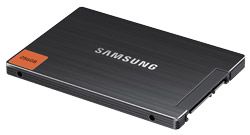
Featuring a triple-core Samsung controller designed to improve multitasking, the 830 series seeks to improve upon the 470 series, which was fast enough to win our previous SSD shootout in February. Like its predecessor, the 830 Series has an attractive brushed-metal case that really stands out in a crowd. It also is available with an upgrade kit that features a USB-to-SATA adapter and Norton Ghost software for easily migrating your data, OS, and apps from your old hard drive.
The 830 series carries a highly competitive MSRP of $429 for the 256GB capacity and $229 for the 128GB size. That's a rate of $1.67 and $1.78 per GB respectively, but we expect those numbers to be even lower at retail.
Stay in the know with Laptop Mag
Get our in-depth reviews, helpful tips, great deals, and the biggest news stories delivered to your inbox.
Intel SSD 510 (250GB)
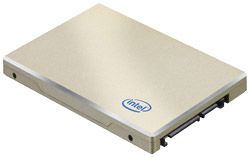
Since entering the SSD market in 2008, Intel has earned a strong reputation for building high-speed drivers with its own controllers. With the SSD 510, the company decided to go with a Marvell 9174 controller that’s used by other manufacturers such as Corsair and Micron, but continues to use its own firmware.
At $2.27 per GB for the 250GB size ($569) and $2.31 per GB for the 120GB capacity ($278), Intel’s drive is one of the more expensive on the market.
OCZ Vertex 3
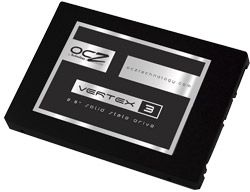
Featuring the popular SandForce 2281 controller chip found in at least a dozen other drives, the Vertex 3 continues OCZ’s tradition of offering high-speed drives at a low cost. At $1.53 per GB for the 240GB capacity ($369) and $1.66 per GB for the 120GB size, this is one of the best deals you can score.
Patriot Wildfire
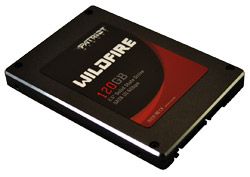
The Wildfire also features a SandForce 2281 controller, but with different NAND flash memory and firmware than the Vertex 3. At $1.99 per GB for the 120GB capacity and $1.96 per GB for the 240GB size ($469), this drive is one of the more affordable options in its class.
The Controls
To get an idea of what to expect we also compared the four SATA III drives to the Samsung 470 series, a SATA II SSD which won our previous SSD roundup, and to a 500GB 7,200 rpm hard drive.
Synthetic Tests
Though each gives a rather ideal view of performance, we ran two synthetic tests to get an idea of what each drive is capable of. CrystalDiskMark 3.0.1 measures average read and write speeds for 1000MB of data stored in different block sizes. The PCMark Vantage HDD Suite performs eight different storage tests based on common tasks such as video editing, importing pictures, and adding music to Windows Media Player and then assigns a score (higher is better).
Sequential Performance
| Drive | Seq Read (MBps) | Seq Write (MBps) | Average |
| Samsung 830 Series (256GB) | 473.8 | 408.1 | 440.9 |
| Intel SSD 510 (250GB) | 448.4 | 328.6 | 388.5 |
| OCZ Vertex 3 (240GB) | 474 | 148.4 | 311.2 |
| Patriot Wildfire (240GB) | 452.6 | 134.1 | 293.4 |
| Samsung 470 Series (256GB) | 251.8 | 241.1 | 246.5 |
| Hitach 7,200 rpm HDD | 100.6 | 104.5 | 102.6 |
Winner: Samsung 830 Series
Samsung’s 830 series blew away the competition with an average transfer rate of 440.9 MBps for sequential transfers, a full 13 percent faster than its nearest competitor, the Intel SSD 510. The OCZ Vertex 3, however, provided equivalent reads. We can also see that even the slowest reading SATA III SSD (Intel SSD 510) has a read transfer rate 78 percent higher than the leading SATA II drive. Write speeds on the Vertex 3 and Wildfire, however, were actually slower than those on the SATA II Samsung 470 Series.
512K Performance
CrystalDiskMark writes the data in a series of 512 kilobyte blocks, which more closely simulates writing a number of small files rather than one giant, contiguous piece of data.
| Drive | 512K Read (MBps) | 512K Write (MBps) | Average |
| Intel SSD 510 (250GB) | 302.4 | 298.2 | 300.3 |
| Samsung 830 Series (256GB) | 308.7 | 269.8 | 289.2 |
| OCZ Vertex 3 (240GB) | 385 | 137 | 261 |
| Patriot Wildfire (256GB) | 390.6 | 114.6 | 252.6 |
| Samsung 470 Series (256GB) | 185.7 | 233.9 | 209.8 |
| Hitach 7,200 rpm HDD | 38.19 | 49.52 | 43.9 |
Winner: Intel SSD 510
As the block sizes get smaller, performance numbers shrink below the sequential maximums. In the 512K block test, the Intel SSD 510 had the highest average transfer rate at 300.3 MBps and the fastest write speed at 298.2 MBPs. However, the Patriot Wildfire had, by far, the quickest reads at this size, returning a rate of 390.6 MBps.
4K Tests
Reading and writing in lots of small random blocks is probably the most common operation any drive performs as it does everything from opening programs to booting up, copying files, or accessing your Windows swap file. CrystalDiskMark measures 4K transfers in two ways: both with single-threaded writes and with 32 4-kilobyte transfers in the command queue at once to take advantage of the drives’ ability to perform many operations at the same time. Good results at a high-queue depth should translate into better multitasking.
| Drive | 4K Read (MBps) | 4K Write (MBps) | 4K NCQ Read (MBps) | 4K NCQ Write (MBps) | Average |
| Samsung 830 Series (256GB) | 19.4 | 48.9 | 252.9 | 95.5 | 104.2 |
| Samsung 470 Series (256GB) | 10.4 | 41 | 114.5 | 60.5 | 56.5 |
| OCZ Vertex 3 (240GB) | 23.6 | 9.9 | 124.9 | 62.1 | 55.1 |
| Patriot Wildfire (240GB) | 16.6 | 10.5 | 119.7 | 49.7 | 49.1 |
| Intel SSD 510 (250GB) | 11.7 | 34.0 | 75.1 | 40.9 | 40.4 |
| Hitachi 7,200 rpm | 0.5 | 0.7 | 0.7 | 0.8 | 0.7 |
Winner: Samsung 830 Series
On the 4K tests, the Samsung 830 series simply dominated, with an average transfer rate of 104.2 MBps, nearly double its nearest competitor. In fact, the last-generation Samsung 470 series outpaced the three other SATA III drives. Still, even the slowest 4K performer, the Intel SSD 510, was 57 times faster than a 7,200-rpm hard drive.
PCMark Vantage HDD Suite
This benchmarking suite, developed by Futuremark, tests hardware performance by automating a variety of common real-world scenarios, such as viewing and editing photos and transcoding audio and video.
| Drive | PCMark Vantage Score |
| Samsung 830 Series (256GB) | 41,203 |
| Patriot Wildfire (240GB) | 39,779 |
| OCZ Vertex 3 (240GB) | 38,472 |
| Intel SSD 510 (250GB) | 34,998 |
| Samsung 470 Series (256GB) | 25,014 |
| Hitachi 7,200 rpm | 4,282 |
Winner: Samsung 830 Series
The Samsung 830 series got the top score on PCMark Vantage’s suite of storage tests, edging out the Patriot Wildfire and OCZ Vertex 3 by more than 1,000 points. The Intel SSD 510 trailed the pack by about 10 percent.
File Copy & Zip Test Results
Real-world results often differ from synthetic test results, so we developed a couple of tests to simulate how you would really use an SSD; copying and moving files, and zipping and unzipping files.
File Copy Tests
We timed two different file-copy operations on each drive. In the multi-file test, we copied 4.97GB of mixed-media files from one folder to another. In the single-file version, we duplicated a single 3.1GB file.
| Drive | Multi-File Copy Time (sec) | Single File Copy Time (sec) |
| Samsung 830 Series (256GB) | 25.3 | 13.0 |
| Intel SSD 510 (256GB) | 30.0 | 15.7 |
| OCZ Vertex 3 (240GB) | 32.3 | 23.0 |
| Patriot Wildfire (240GB) | 37.3 | 25.7 |
| Samsung 470 Series (256GB) | 49.3 | 24.0 |
| Hitachi 7,200 rpm | 137.0 | 71.7 |
Winner: Samsung 830 Series
Samsung’s 830 Series drive owned the competition in our file copy tests, beating its nearest competitor, the Intel SSD 510, by 15 percent in the multi-file copy and 18 percent in the single file copy. The two SandForce-based drives trailed by a wide margin. Due to its lower-bandwidth interface, the SATA II drive was also significantly slower.
Zip and Unzip Tests
We further taxed the SSDs by zipping 4.97GB of mixed-media files and then unzipping the resulting archive.
| Drive | Zip Time (mm:ss) | Unzip Time (mm:ss) |
| OCZ Vertex 3 (240GB) | 2:47 | 2:25 |
| Samsung 470 Series (256GB) | 2:58 | 2:28 |
| Patriot Wildfire (240GB) | 3:11 | 2:27 |
| Intel SSD 510 (250GB) | 3:24 | 2:17 |
| Samsung 830 Series (256GB) | 3:24 | 2:23 |
| Hitachi 7,200 rpm | 3:25 | 3:32 |
Winner: OCZ Vertex 3
When it comes to archiving, the OCZ Vertex 3 is king, taking 24 seconds less than its nearest SATA III competitor to build the ZIP file. Surprisingly, the SATA II-based Samsung 470 series actually built the ZIP faster than its SATA III successor. Intel’s SSD 510 offered a slightly faster extraction speed than the Vertex 3, but OCZ’s drive offers the best overall mix of performance on both tests.
Application and Multitasking
One of the most frustrating things about using a hard drive-based notebook is waiting for programs and files to open. SSDs can launch your applications significantly faster, saving you time and gray hairs. To determine how quickly each SSD launches applications, we tested open times on five popular programs:
- Adobe Reader X opening to a 500-page document
- Excel 2010 opening to a 6.5MB spreadsheet filled with 65,000 names and addresses
- Firefox 7 opening to a blank page
- Photoshop CS5.1 (64-bit) opening to a 400MB TIF file
- Word 2010 opening to a blank document
Single Application Opens (seconds)
| Drive | Adobe Reader (sec) | Excel (sec) | Firefox (sec) | Photoshop (sec) | Word (sec) | Average Open (sec) |
| OCZ Vertex 3 (240GB) | 3.9 | 3.7 | 0.9 | 5.7 | 0.7 | 3.0 |
| Patriot Wildfire (240GB) | 3.6 | 3.9 | 1.0 | 5.6 | 0.8 | 3.0 |
| Intel SSD 510 (250GB) | 3.7 | 3.9 | 1.0 | 6.2 | 0.7 | 3.1 |
| Samsung 830 Series (256GB) | 3.8 | 4.2 | 1.1 | 5.8 | 0.8 | 3.1 |
| Samsung 470 Series (256GB) | 3.9 | 4.4 | 1.4 | 8.4 | 0.8 | 3.8 |
| Hitachi 7,200 rpm | 7,1 | 14.0 | 3.2 | 25.9 | 2.8 | 10.6 |
Winner: OCZ Vertex and Patriot Wildfire
The two SandForce-based drives win the file-open test by the slimmest of margins, just one tenth of a second. In practice, you shouldn’t notice the difference, as all four SATA III drives offered nearly identical application opens on each of the five programs. The largest delta between drives on any application was just 0.5 seconds and that only occurred twice. All four newer drive also offered significantly faster times than the old SATA II SSD and the glacial hard drive.
Multitasking: App Opens Under Stress
Opening a single application by itself is one thing, but launching a program and running another disk-intensive operation in the background poses a much greater challenge. To test the drives’ ability to multitask, we timed our application opens while we zipped 4.97GB of files in the background.
| Drive | Adobe Reader (sec) | Excel (sec) | Firefox (sec) | Photoshop (sec) | Word (sec) | Average Open (sec) |
| Patriot Wildfire (240GB) | 4.5 | 6.6 | 1.4 | 5.6 | 0.8 | 3.8 |
| OCZ Vertex 3 (240GB) | 4.8 | 6.7 | 1.4 | 5.7 | 0.7 | 3.9 |
| Samsung 830 Series (256GB) | 4.7 | 6.7 | 1.7 | 5.8 | 0.8 | 4.0 |
| Intel SSD 510 (250GB) | 4.6 | 7.3 | 1.9 | 6.2 | 0.7 | 4.1 |
| Samsung 470 Series (256GB) | 4.9 | 7.2 | 1.9 | 8.4 | 0.8 | 4.7 |
| Hitachi 7,200 rpm | 92.8 | 22.6 | 4.3 | 25.9 | 2.8 | 29.7 |
Winner: Patriot Wildfire.
As with the single-application open test, there was little difference between the best- and worst-performing SATA III drive, as only 3 tenths of a second separated the first-place Patriot Wildfire (3.8 average open) from the fourth place Intel SSD 510 (4.1 average open). However, the Intel SSD 510 trailed by a noticeable 0.6 and 0.7 seconds on the multitasking Photoshop and Excel tests.
Again, we see that any of the SATA III drives is significantly faster than the SATA II-based Samsung 470. The 7,200-rpm hard drive performs so poorly in multitasking app opens that it feels like a slow-churning cassette tape in a world filled with Blu-ray discs.
Verdict
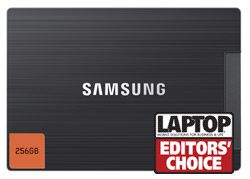
Provided your notebook supports the faster interface, our tests show that you’ll see significantly better performance with a SATA III SSD than a SATA II drive. Though the delta between SATA III and SATA II is largest in file copies and synthetic tests, even opening lightweight apps is noticeably quicker with the latest generation of drives.
Spending a little over $200 for a 120GB drive seems like a no-brainer when you can open apps under stress 700 percent faster or copy files in 18 percent of the time those tasks take on a 7,200 rpm drive.
Amongst the SATA III drives, the Samsung 830 series is the clear winner, performing significantly better than its competitors on both file copies and synthetic tests. The SandForce-based OCZ Vertex 3 and Patriot Wildfire provided fantastic open times, but they were only one to two tenths of a second faster than the Samsung, which beats the field by a wide margin in file operations. If you want to supercharge your Intel 2nd-Generation Core series notebook, the Samsung 830 series is your best choice.
Overall Winner: Samsung 830 Series

Most Popular

